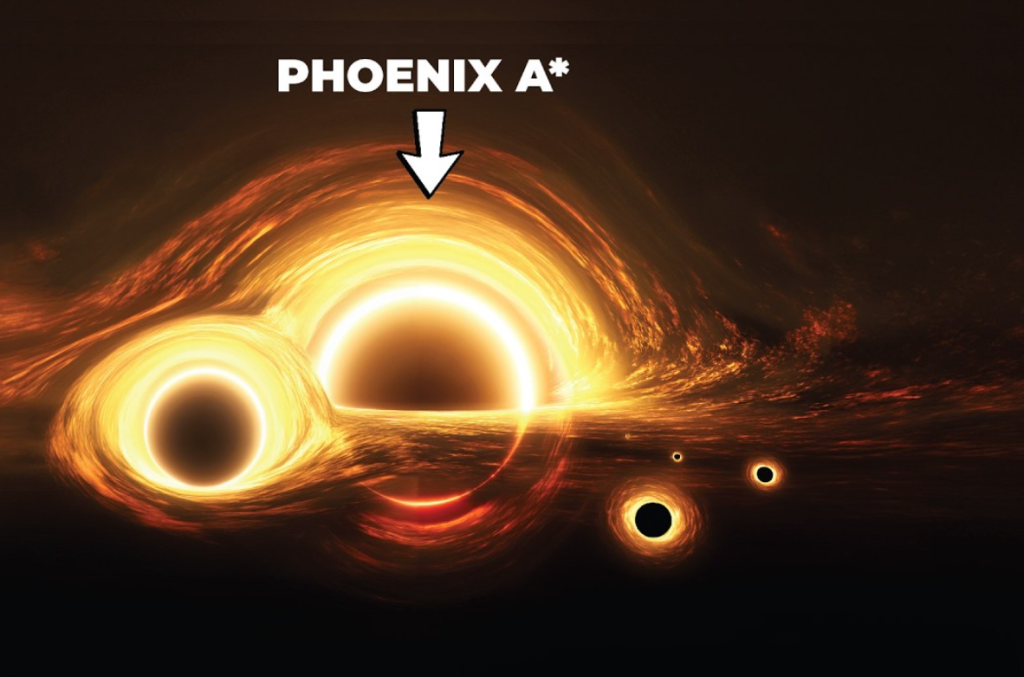Phoenix A is a supermassive black hole located in the Phoenix cluster, a massive galaxy cluster about 5.8 billion light years away from Earth. What makes Phoenix A extraordinary is its immense size, with a mass up to 100 billion times that of our Sun. This is an enormous contrast to the black hole at the center of our Milky Way, Sagittarius A*, which is only about 4 million times the mass of the Sun. How did Phoenix A become so large? While scientists don’t yet have all the answers, there are several factors that contribute to its immense growth.

One of the key processes is accretion, where a black hole gains mass by feeding on nearby material. The Phoenix cluster is full of gas and dust, providing a continuous supply for Phoenix A to consume. As this material spirals inward, it forms an accretion disc, generating immense heat and radiation that make the region around the black hole glow brightly in X-rays. Phoenix A is also able to tear apart and consume entire stars that come too close, a process known as tidal disruption. These shredded stars further contribute to the black hole’s growth.
Unlike the relatively quiet Sagittarius A*, Phoenix A is highly active, constantly feeding and growing. Another factor aiding its growth is the merger of smaller black holes. In the crowded environment of the Phoenix cluster, galaxy collisions are common, and the central black holes from these galaxies can merge, increasing their combined mass. These mergers are significant for both the growth of the black hole and for producing gravitational waves that can be detected by observatories like LIGO and Virgo.
Some scientists speculate that Phoenix A may have started with an unusually large mass, possibly forming from the collapse of a massive primordial gas cloud or even a cluster of smaller black holes. There is also a theory involving dark matter, suggesting that interactions with dark matter could have accelerated its growth.
The energy output from Phoenix A affects not only its host galaxy but also the surrounding cluster. Its powerful radiation and particle jets can regulate star formation in nearby galaxies, acting as a self-regulating mechanism in the evolution of galaxies. Additionally, these jets extend for thousands of light years, influencing the intergalactic medium and other galaxies far from Phoenix A.
The study of Phoenix A and the Phoenix cluster has been made possible by observatories like the Chandra X-ray Observatory and the Very Large Array (VLA), which help scientists gather valuable data about this colossal black hole. By analyzing X-rays, radio emissions, and optical light, researchers are able to piece together a detailed understanding of Phoenix A and its surroundings, revealing the complex interactions that drive the growth of supermassive black holes and the evolution of galaxies.
In conclusion, Phoenix A is not just a cosmic giant; it plays a pivotal role in shaping the environment of its galaxy cluster, offering scientists a unique opportunity to study the evolution of black holes and galaxies across the universe.